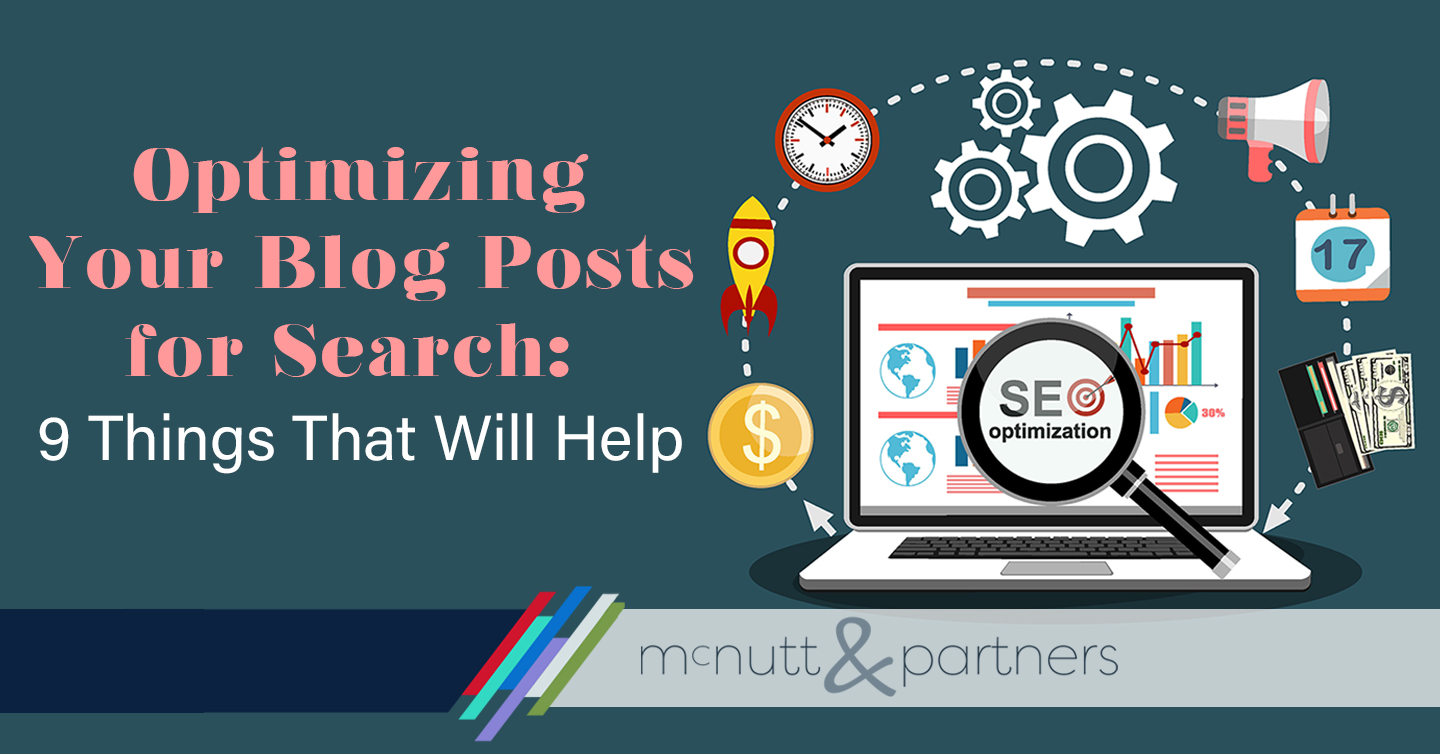Maintaining a blog not only provides value for your brand followers, but it is a means for creating content that will help both people and search engines find your brand among the vast frontier that is the internet. When optimized correctly, your blog content has a better chance of appearing in search results. In optimizing your blog posts for search, there are a handful of checklist items that you should regularly adhere to.
Readability
Whether or not your blog is easy to read can actually factor into its search ranking. Under the umbrella of readability, here are a few tips to follow:
- Use active rather than passive voice.
- Break up your copy with subheads.
- Write shorter paragraphs.
- Vary your sentence length.
Keyphrase
Identifying a keyphrase is a must for optimizing your blog posts for search. Beyond just identifying it, however, you should also pay attention to its placement, frequency of use (density) and length of the keyphrase itself. You should always include the keyphrase in the blog title, first paragraph and meta description, but you can better optimize your post by also including it in higher-level subheads. In terms of density, we follow Yoast’s rule to have a keyphrase density of 0.5 to 3%.
The length of the keyphrase itself is also a factor. While a longer keyphrase can help you stand out among competitors, it is also more difficult to use it frequently enough in the blog itself. Opt for a keyphrase that includes about four words if possible.
Meta description
The meta description is often the preview text that appears below a link title in search results (also called a snippet). Adding a meta description is key for optimizing your blog posts for search. On top of that, you should pay attention to the length of your meta description. Google typically uses snippets that have between 120 and 156 characters.
Text length
Text length relates to readability as well as being a factor for SEO. The number of words on any page of your site affects whether or not it will rank in search. Pages with more text are easier for search engines to recognize and conclude what the page is about. The type of page will ultimately determine how much text appears on it, but in general your blog posts should be at least 300 words long. Keep in mind that if you do have long amounts of text, you will need to break it up using subheads and links for readability.
Featured image
Blog posts are not all about the copy, however. Images should always accompany your blog posts. They are not only visually stimulating, but they can help in optimizing your blog posts for search. Images simply make your content more appealing while providing yet another means for a search engine to recognize you.
Image alt attributes
One way that search engines can recognize your visual content is through alt text. Alt text serves to describe the appearance and function of an image on a page. You will get even more points toward SEO if your alt text includes your keyphrase.
Links
Including links in your blog copy is another checklist item for SEO. This includes both internal links (links to other places on your site) and outbound links (links to other websites). Internal links can help you guide your site visitors and search engines to your other important content. External links also provide value by giving an essential pat-on-the-back to another well-written resource. The idea is about online karma—that if you do it for others, they will link to your page in return.
SEO title width
The SEO title is the blog title that is visible in a search engine before people get to your website. It can be different from the full title that appears on the blog post on your site. Your SEO title should neither be too short, nor too long. Too short means that it is not making full use of the available space. Too long means that it will get cut off by the search engine.
Categories and tags
Categories and tags serve the purpose of sorting your blog posts, which help make things clearer for search engines and people alike. Read more about the case for categorizing your blog posts.
A plug-in can help you keep track
We just threw a lot of info at you—so how will you keep track of it? At McNutt & Partners, we use Yoast SEO. Yoast is a plug-in tool for WordPress that guides you to meeting the highest standards of SEO and readability for your content. In other words, Yoast holds your hand through the process of optimizing your blog posts for search. If your post is optimized, it gives you a (literal) green light. If not, it tells you which of the above items you need to fix.
Need help optimizing your blog posts for search? McNutt & Partners is a full-service advertising and digital marketing agency. Contact us today for your marketing needs! Call 334-521-1010, or visit our contact page.

